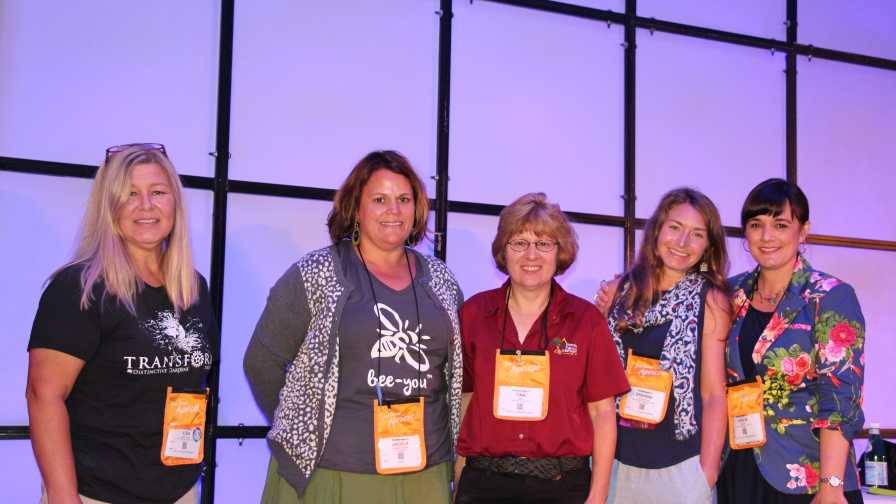Town Hall Panel At Cultivate Focuses On Selling To A New Generation Of Consumers

Are we still trying to sell our products in the 21st century using a model straight out of the 1980s? This was the main question raised during the annual Town Hall panel discussion that took place at Cultivate’16.
Are we still trying to sell our products in the 21st century using a model straight out of the 1980s? This was the main question raised during the annual Town Hall panel discussion that took place at Cultivate’16.
Moderated as usual by Lloyd Traven of Peace Tree Farm, the talk during this session focused on whether (or rather, why) the plant industry is marketing its products with an old, outdated concept at a time when consumers are seeking new information, and are doing so in a variety of ways beyond the traditional visit to a garden store.
The all-women panel included the following speakers:
• Brienne Gluvna Arthur of Brie Arthur Communications
• Tina Bemis of Bemis Farms Nursery in Spencer, MA
• Leslie Halleck of Halleck Horticultural LLC
• Lisa Higby Lefevre of Distinctive Gardens in Dixon, IL
• Angela Treadwell Palmer of Plants Nouveau
Here are 10 insights that came out of the spirited discussion that took place (note: direct quotes from the speakers were not for publication).
1. If you want to sell to today’s consumers, start by taking a step back and analyzing how you currently connect with your customers. Perhaps it’s time for a refreshed approach. As one panelist said, “We are very much into what we do, but this doesn’t always extend to our customers. We need to choose to be relevant to them.”
2. Use signage to promote not just on plant features, but also on emotions. “We had been promoting plant benefits and features,” said one panelist who admitted she likes growing but struggles with using signs to sell products. “Now I want to focus on the emotional aspects of plants and how they can make you feel.”
3. Our new customers are not always in front of us, but thanks to social media, they can always communicate with us. In other words, make sure you are using your website, Facebook page, etc., to reach out to your customers, and make sure you are using these resources to tell a story.
4. Connect your products to your customer’s everyday lifestyle. One panelist noted that independent garden centers often fail to do this, simply because they may not know who their customer is. “Learn how to accommodate your customers’ lifestyle goals,” the panelist said. “Catering to a lifestyle creates relevance.”
5. Use technology to learn more about your customers — but don’t forget to talk to them, as well. As one panelist noted, “The technology is there for us to know who our customers are, whether it’s POS systems or Web analytics. These tools are available to everyone. The bottom line, however, is that we still need to have conversations with our customers.”
6. On your plant tags, be clear and realistic about what your customers can expect when they buy a plant. This can help you get around the pervasive sense of impending failure that many new plant buyers may have. “Buying a plant is a commitment, so let your customers know what they can expect from this commitment,” one panelist said. Another panelist noted that many plants on the market were originally bred in Europe, which doesn’t have many of the harsh climate conditions found in some areas of the U.S. “We bring these plants into our climate and simply expect them to survive.”
7. Events are a great way to attract a new demographic. The key, said one panelist, is to tell these new customers who you are and make your business relevant to them. “A successful small business can have value in the community and raise awareness of your brand.”
8. Promote your local vendors. Everything seems to revolve around “local” these days, so tell your customers where the plants and products you are selling originated from.
9. Get rid of “green guilt.” Rather than risking losing a customer who may be intimidated at the thought of buying a plant they know might die, choose instead to communicate the value of how plants can make the world a better place. Signage is one way to make this happen. Said one panelist, “We use signage not just to showcase plants that are resistant to deer or bugs; we also use it to highlight plants that will attract pollinators.”
10. People are doing less in-store shopping these days, so when someone does come into your store, make it a great experience for them. One panelist cited, as an example, a store that she will commonly drive many miles to get to, simply because they “deliver an exceptional experience” compared to the store located just a couple miles up the road from her. “Garden centers should be more about community and activity, and not just about retail,” one panelist said. “People deserve an authentic experience, and garden centers can do this by positioning themselves as both a community gathering place and a great educational resource.”
11. “Plant geeks,” like it or not, only represent a small portion of your audience. “We can’t expect all our customers to be highly skilled gardeners,” said one panelist. “Most people just want to take care of their homes.”
12. Hire young people, and follow what they do. “You might find yourself better able to listen to people through multiple channels,” said one panelist. “Once you hear what they have to do, you’ll be able to focus on creating memories and one-of-a-kind experiences for them.”









